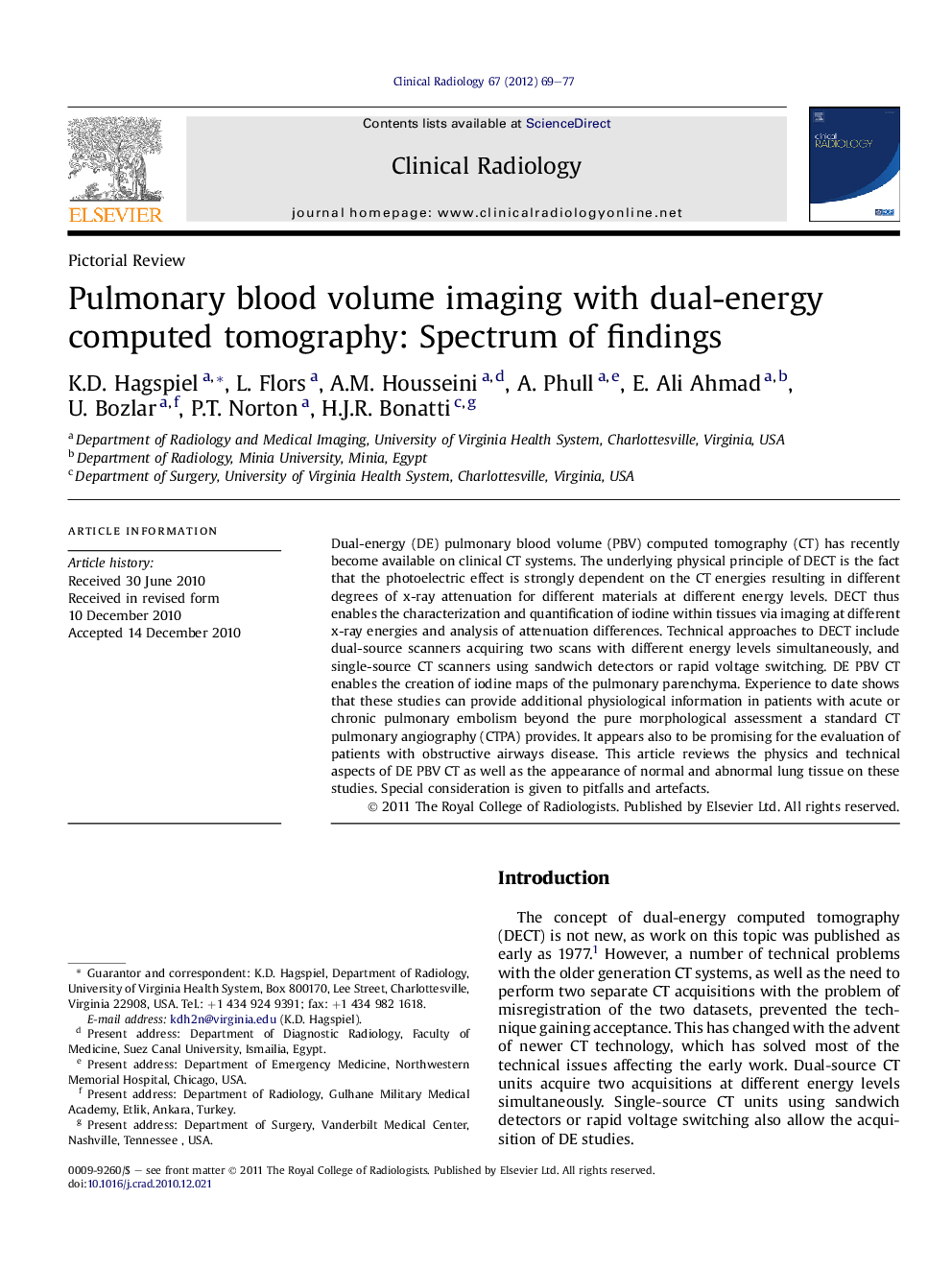| Article ID | Journal | Published Year | Pages | File Type |
|---|---|---|---|---|
| 3982436 | Clinical Radiology | 2012 | 9 Pages |
Dual-energy (DE) pulmonary blood volume (PBV) computed tomography (CT) has recently become available on clinical CT systems. The underlying physical principle of DECT is the fact that the photoelectric effect is strongly dependent on the CT energies resulting in different degrees of x-ray attenuation for different materials at different energy levels. DECT thus enables the characterization and quantification of iodine within tissues via imaging at different x-ray energies and analysis of attenuation differences. Technical approaches to DECT include dual-source scanners acquiring two scans with different energy levels simultaneously, and single-source CT scanners using sandwich detectors or rapid voltage switching. DE PBV CT enables the creation of iodine maps of the pulmonary parenchyma. Experience to date shows that these studies can provide additional physiological information in patients with acute or chronic pulmonary embolism beyond the pure morphological assessment a standard CT pulmonary angiography (CTPA) provides. It appears also to be promising for the evaluation of patients with obstructive airways disease. This article reviews the physics and technical aspects of DE PBV CT as well as the appearance of normal and abnormal lung tissue on these studies. Special consideration is given to pitfalls and artefacts.
